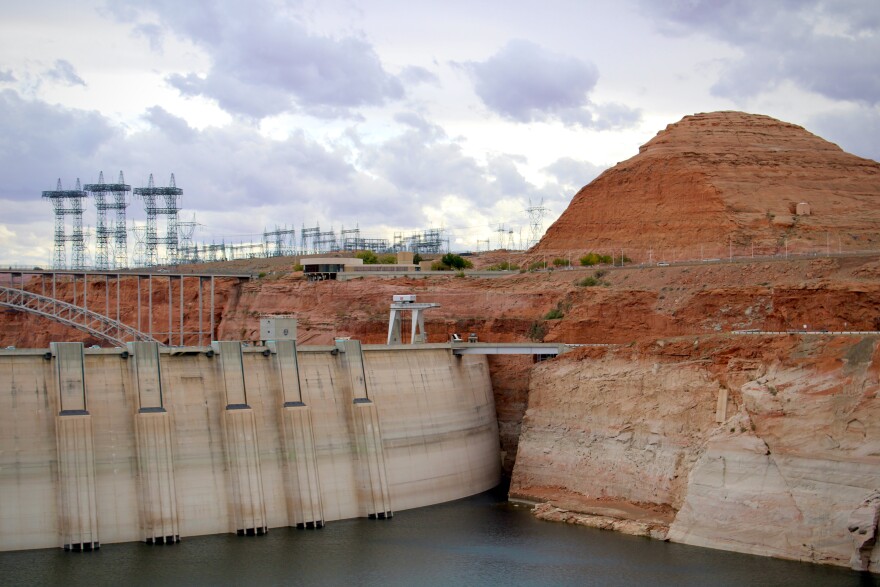After states in the Colorado River's Upper Basin filed a request with the Bureau of Reclamation, ramped up water releases from Flaming Gorge Reservoir have been suspended about two months early.
In a letter sent to the federal agency, the group of Upper Basin states – Utah, Wyoming, Colorado and New Mexico – said this winter has been particularly wet, and releases should be paused so the runoff can help refill Flaming Gorge. The paused schedule of releases is part of the 2019 Drought Response Operations Agreement.
Federal authorities have drawn from Flaming Gorge , located in the northeast corner of Utah and the southwest corner of Wyoming , to prop up Lake Powell. Dropping water levels in Powell – the nation’s second largest reservoir – are threatening the ability to generate hydropower within Glen Canyon Dam.
The Bureau of Reclamation expects the move to leave an additional 36,000 to 37,000 acre-feet of water in Flaming Gorge after releases were suspended on Tue sday, March 7. An acre-foot is the amount of water needed to fill one acre of land to a height of one foot. One acre-foot generally provides enough water for one to two households for a year.
"We're encouraged that Reclamation has begun to suspend Drought Response Operations releases from Flaming Gorge to Lake Powell,” wrote Amy Haas, executive director of the Colorado River Authority of Utah, in an email to KUNC , “ but Utah's priority is to put back all water previously released, approximately 588,000 acre feet, into [Flaming] Gorge as soon as possible given the favorable hydrology."
The decision to suspend releases follows a public back-and-forth between groups of states that use water from the Colorado River. The Upper Basin and Lower Basin are often at odds about water management decisions, and the recent debate over Flaming Gorge represents a minor flare-up amid larger tensions about how to share the Colorado River’s supply, which is shrinking due to climate change.

A letter from the Lower Basin states of Arizona, Nevada and California agreed with the Upper Basin proposal, but asked the federal government to exercise caution before making any decisions. Lower Basin leaders asked Reclamation to leave the door open for future releases, which may be needed later this year if that boosted runoff doesn’t materialize. They also wanted to be consulted as part of the process to make decisions about Flaming Gorge and other similar reservoir releases.
This winter has brought heavy snow to high-altitude sections of Colorado, where the Colorado River gets its start. Some scientists worry that extraordinarily warm temperatures and dry soil could prevent some of that snow from reaching streams, rivers and reservoirs. Climate experts say this strong winter will provide a short-term boost for water storage along the Colorado River, but won’t be enough to substantively turn around a 23-year megadrought that has shrunk the region’s supplies.
This story is part of ongoing coverage of the Colorado River, produced by KUNC, and supported by the Walton Family Foundation.
Copyright 2023 KUNC. To see more, visit KUNC.


